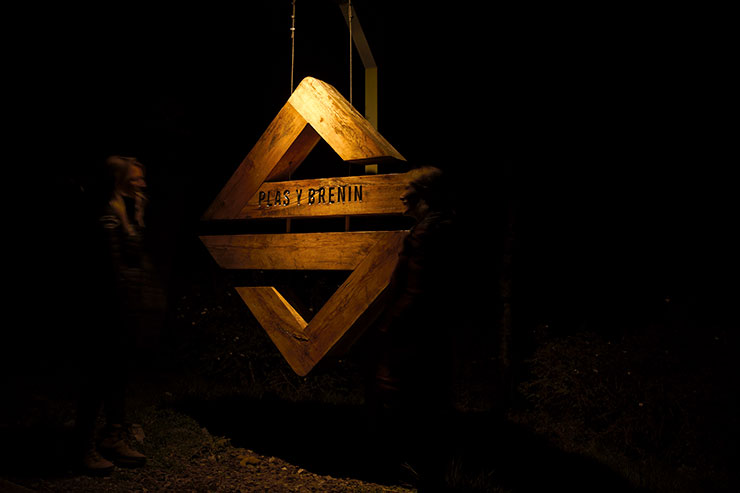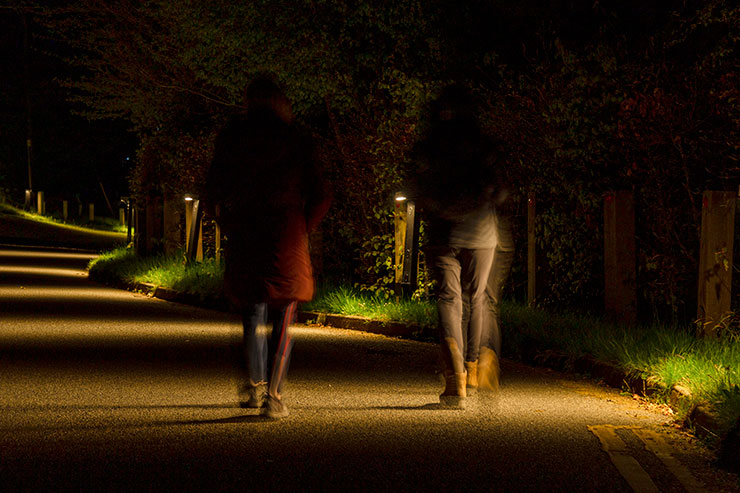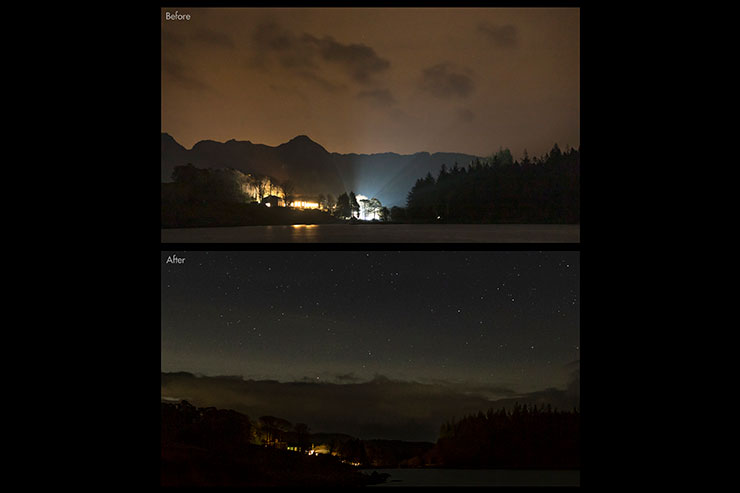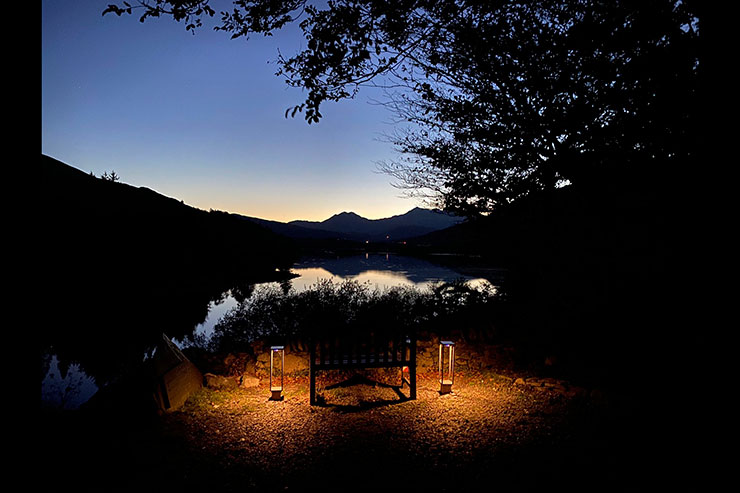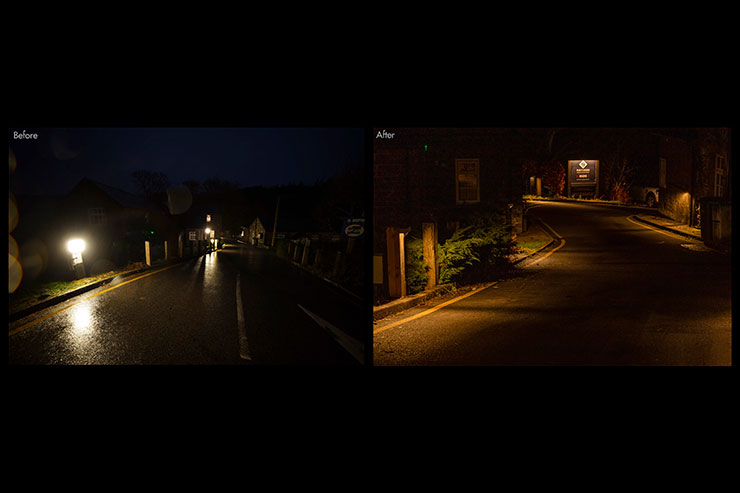- ABOUT
- JUDGING
- CONTACT
- MORE
- 2024 Entries
- Installations 2024
- Past Winners
- Subscribe
- [d]arc directory
- arc magazine
- darc magazine
Plas Y Brenin, UK
ProjectPlas Y BreninLocationSnowdonia, UKLighting DesignDark Source, UKAdditional DesignBebbington WilsonClientSnowdonia National Park Authority, Prosiect NOS - The North Wales Dark Skies PartnershipLighting SuppliersHeper, Stoane Lighting, Atrium, Flos, Mesh Lighting, L&L Luce&Light, Thorlux LightingPhotographyDylan Parry Evans, Karl Midlane
Located in the lush heart of Snowdonia, Plas Y Brenin is a vibrant national outdoor centre that attracts thousands of international visitors every year. The site has been suffering from a significant level of light pollution visible for miles, causing several issues for itself and the surrounding biodiversity.
Snowdonia National Park Authority, in collaboration with Prosiect Nos, commissioned Dark Source to develop a lighting design that can restore the dark skies and tackle the growing concern for the region, which has been known as a Dark Sky Reserve since 2015. The project was conceived with an environmental ethos, aiming to reduce energy waste and impact on biodiversity whilst exploring further opportunities to enhance the night-time experience. Warm-coloured, glare-free, low-intensity lighting was utilised in order to meet dark sky-friendly measures, along with high energy efficiency & lamp-life criteria to maximise the savings.
Existing lighting mostly consisted of fluorescent bulkheads and LED floodlights, which reduced the site’s legibility due to glare and uncontrolled light distribution. One of the key challenges of the project has been making the best use of the available budget and resources. The site consisted of various over-lit & light-deprived areas. Employing a holistic approach, the project sought to strike a balance between lit and unlit spaces in order to create a visually pleasant and consistent experience.
The large majority of the lighting at Plas Y Brenin is achieved below the eye level and at door height, focusing the light on the horizontal plane whilst keeping it human scale. This also meant, all lighting is kept accessible for ease of maintenance and had to meet a high criteria of exterior rating & durability. In areas where vertical illumination was essential for improving the legibility and wayfinding of the site, it was done in a fashion that is by-product of downlighting. All luminaires were made to face downwards to avoid upwards travelling light. All floodlights were removed from the scheme. All entrance thresholds that are not a part of the main circulation utilised passive infrared sensors (PIR) to avoid unnecessary illumination of non-essential areas. This meant when there is no activity, no light was wasted. In certain areas where supplying mains power proved to be challenging, solar PIR lanterns were used as a low-energy solution. These only come on after dark and when movement is detected. Existing bollard bodywork was refurbished and maintained. Only the light sources were replaced to reduce the material and economic waste. Luminaires with elliptical and forward throw were used to increase the reach and coverage whilst creating a textured visual character unique to the site.
Bats have been observed to return to the site to forage around the hedgerows that were too illuminated before. The project ensured a core area of the dark sky reserve is further enhanced and protected. Following the improvement, the site’s night-time experience is now worthy of representing Plas Y Brenin’s brand and environmental ethos. The overall transition to LEDs maximised the longevity and energy-savings of the Plas Y Brenin scheme. Having closely worked with a wide range of highly-efficient lighting products, the energy usage was reduced by 1.9 tonnes of CO2e (8,000kW) annually.
The project was recently featured on BBC One’s Countryfile programme, bringing attention to the important role of considerate lighting design within the dark skies movement.
